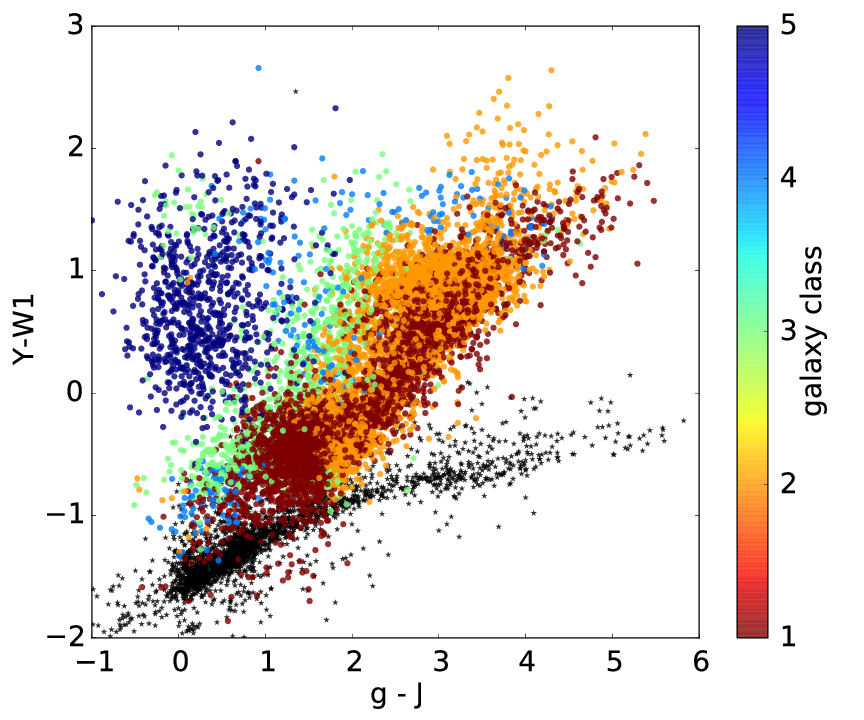Data-Intensive Astronomy
Current and future instruments will deliver unprecedented amounts of data crucial for a broad range of astrophysical questions. Our focus is on the optimal exploitation of these new datasets, both in terms of developing new methods and by pursuing scientific questions in the area of galaxy evolution.
Projects of this group include:
- using machine-learning methods for source classification (star, galaxy, AGN, QSO separation), and photometric redshift estimation
- assessing the impact of active galactic nuclei (AGN) in galaxy evolution and investigating the impact of the large scale structure
- model the AGN using machine-learning models
Figure 1 shows a recent example of Random Forest application on classification (Fotopoulou & Paltani, 2018), with each color corresponding to a separate class (black: stars, red: passive galaxies, orange: spiral galaxies, green: starburst galaxies, cyan: AGN, blue: QSO).
We have a significant contributing role in Euclid, an M-Class European Space Agency (ESA) mission launched successfully on July 1st, 2023. We are also involved in several other facilities and projects including LSST and 4MOST.
